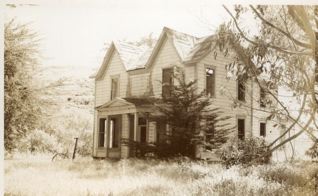There were times the search for Coastside history led me to the countyâs architecturally uninspiring offices in Redwood City âand one day in the 1970s I was searching for maps of the original ranchos. Of Guerrero, Vasquez and Miramontes.
In the language of acreage, the old ranchos seemed immense: I was anxious to see a map with the actual boundary lines.
An all- business lady wearing a dark suit directed me to an office, identical to the others, but this one was the home of the man Iâll call âthe Keeper of the Mapsâ?.
I got the feeling heâd inhabited this space forever. He knew every townâs outline and shape and what the ..â¦.., ========== and { } meant. All the codes and symbols. He knew the name of every creek and hollow. Heâd lived in San Mateo County all his life and felt a special affection for the Coastside.
He was gracious: âMaps of the original ranchos? Do you want copies?â?
The encounter was brief but the “Keeper of the Maps” made a lasting impression. Someday, I thought, he might make a good story.
Decades later I was ready to write that storyâ it had been a long timeâwas he still tending his maps? was he alive?âAnd in the course of tracking him down, I sadly found his obituary.
Not the first time I had been too late.
But within the obit were the names of siblings. Aha! I thought, Iâll interview one of his relatives.
I’ve had stories take a sharp turn and go in an unexpected direction before–but never one so delightfully surprising.
One of the names was listed in the phone book. I called her, it was the map man’s sister, she was friendly and invited me to her home– one of those endless apartment complexes, hard to tell where it began and ended. Iâd been there before on an interview: a lot of seniors lived quiet, eventless days and nights there.
I can still see her standing at the end of the long, barren hallway. Outside of her apartment, awaiting me.
She was a knockout. I couldnât tell her ageâbut she had to be in her 70s. Her hair was brown, for cut and style, think Barbra Stanwyck. Her skin was smooth and wrinkle-less. I swear!
When she saw my notebook, she warned: âMy daughterâs a lawyer. Watch what you write.â?
She was gorgeous– âNo, Iâve never dyed my hair. No, Iâve never had a facelift, or use botox.â?
She was the sexiest old lady Iâd ever seen. I was stunned. In all my years of interviewing seniors, Iâd never see such a good looking old lady
I explained I was there to talk about her brother, the âKeeper of the Mapsâ?âbut when I asked questions about him, she gave one -word answers and then steered the conversation to herself, shocking me with tales of her active love life.
That night this widow of a prominent businessman was looking forward to a date with a new boyfriend. She couldnât wait. Every time the phone rang, and it did ring several times, she tittered like a teenager hoping it would be him. And one time it actually was.
âI’m not going to tell him I’m 82,â? she said conspiratorially. âHe thinks Iâm in my 70s. I kissed him on our first date.â?
Then, yet another another phone callâthis from a retired television executive whose name I recognizedâ¦he was calling to ask if he could stay the night. Wow!
She made it clear the interview was near an end and I left having made zero progress on my âKeeper of the Mapsâ? story. Not only that but I struck out twice. What I learned about her I couldnât really use; it would have been indiscreet.
Now enough time has passed that I feel I can tell a little about that gorgeous babe.
I didnât learn very much about maps– but I sure learned that some seniors have a torrid love life.




